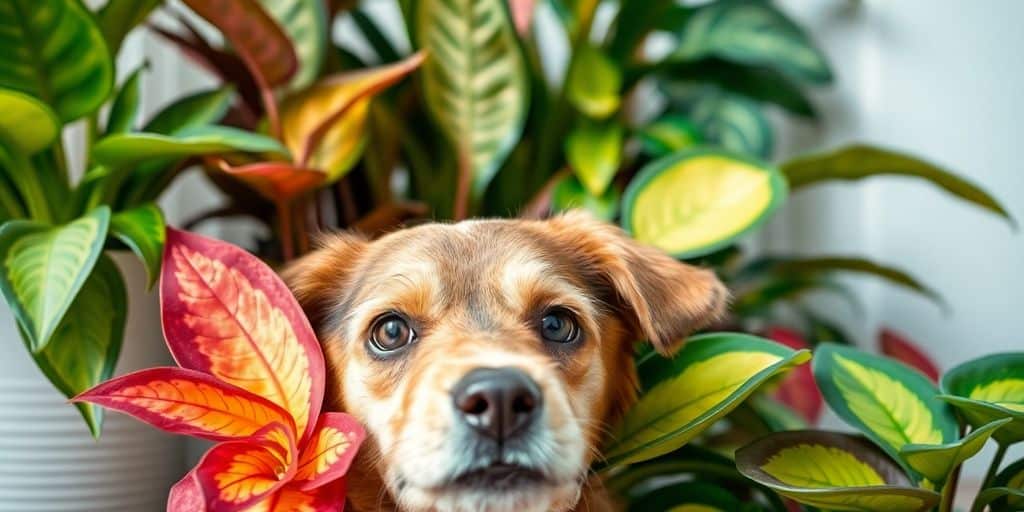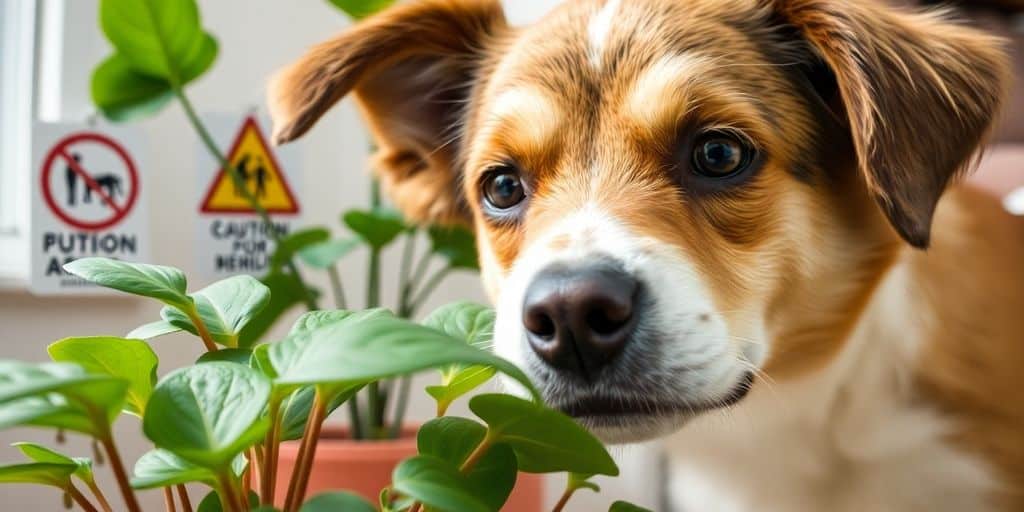Which plants are toxic for pets? Important safety tips can help you create a home that’s both green and safe for your furry friends. While houseplants add beauty and calm to any space, some can pose serious risks to animals. Knowing what to avoid is the first step to prevention.
Many common plants, though harmless to humans, can be dangerous if chewed or ingested by pets. Cats and dogs are naturally curious, and even a nibble can lead to health issues. That’s why awareness is key for any pet owner.
A pet-friendly home doesn’t mean giving up on plants altogether. It’s all about choosing the right ones and placing them wisely. With the right approach, you can enjoy your greenery without worry.
Curious to learn more? In this guide, we’ll cover which plants to steer clear of and how to keep your pets protected. Let’s make your home both vibrant and safe.
Key takeaways
- Certain plants like lilies and marijuana can be very harmful to pets.
- It’s a good idea to pet-proof your home and choose safe plants.
- If you suspect your pet has ingested a toxic plant, contact a vet immediately.
Identifying common toxic plants for pets
Okay, so you wanna know which plants are a no-no for your furry friends? It’s a super important question! According to the ASPCA, calls about pets eating toxic plants are actually pretty common. I’ve seen it happen, and trust me, it’s not fun. Here’s the lowdown on some of the usual suspects:
Lilies and their dangers
Lilies are seriously bad news, especially for cats. Even a tiny nibble can cause major kidney damage. I’m talking Lilium spp. – so Asiatic lilies, Easter lilies, all those pretty ones. If you’re a cat person, it’s best to just avoid them altogether.
Seriously, it’s not worth the risk. I remember my neighbor’s cat got into some lilies once, and it was a whole ordeal. Emergency vet visit, the works.
Marijuana and its effects
With marijuana becoming more common, it’s something to be aware of. While it might seem chill for us, it’s not the same for pets. Dogs, especially, are super sensitive to it. If they get into your stash, you might see them acting wobbly, dribbling pee, or just generally out of it. It can cause some serious anxiety for them, too. Keep your edibles and plants well out of reach, folks. Trust me, a stoned pet is not a happy pet.
Preventing pet exposure to harmful plants

Okay, so we know which plants are trouble. Now, how do we keep our furry friends safe? It’s all about creating a safe environment, both indoors and out. I’ve had my share of close calls, especially with a curious cat who thinks everything is food. Let’s dive into some practical tips.
Pet-proofing your home
First things first: the best way to prevent plant poisoning is to keep toxic plants out of reach. Think of it like baby-proofing, but for your pets. Here’s what I’ve learned:
- Elevate: Use plant stands or hanging baskets to keep plants high and away from curious paws and mouths. This works wonders, especially for cats who love to climb.
- Create barriers: If you have plants that can’t be moved, use decorative fences or netting to block access. It’s not the prettiest solution, but it’s effective.
- Designate a plant-free zone: Consider keeping all houseplants in a single room that your pets can’t access. This gives you peace of mind and your pets a safe space.
- Be mindful of fallen leaves/petals: Some pets might ingest fallen leaves or petals, so sweep regularly.
Choosing pet-safe plants
Bringing greenery into your home doesn’t have to be a hazard. There are tons of beautiful, pet-friendly options out there. I always double-check before bringing a new plant home. Here are a few of my favorites:
- Spider Plants: Easy to care for and non-toxic, they’re a great choice for beginners.
- African Violets: These flowering plants add a pop of color and are safe for pets.
- Orchids: Elegant and pet-friendly, orchids are a sophisticated choice.
- Prayer Plant: Known for their beautiful foliage, these plants are safe for cats and dogs.
It’s always a good idea to cross-reference any plant with a reliable source like the ASPCA’s list of toxic and non-toxic plants before bringing it into your home. Better safe than sorry, right?
Responding to plant poisoning in pets

Okay, so your pet might have snacked on something they shouldn’t have. Don’t panic! I know, easier said than done, right? But staying calm is key. I’ve been there, staring at my dog wondering if that chewed-up leaf was going to send us to the emergency vet. Here’s what I’ve learned:
Immediate actions to take
First things first, try to figure out what your pet ate. This makes a huge difference for the vet.
Here’s a quick checklist:
- Collect a sample: Grab a piece of the plant, take a picture, or even bag up some vomit (gross, but helpful!).
- Don’t play doctor: Seriously, unless your vet tells you to, do not try to make your pet throw up. Some toxins can do more damage coming back up.
- Gather info: Jot down when you think they ate it, how much they weigh, and any weird symptoms you’re seeing. Are they drooling? Acting wobbly? All important stuff.
When to contact a veterinarian
Honestly, when in doubt, call the vet. It’s always better to be safe than sorry. You can also try the ASPCA Animal Poison Control Center or the Pet Poison Helpline. They might charge a fee, but they can give you solid advice on whether you need to rush to the animal ER. Remember, time is of the essence, especially with certain plants. Don’t wait to see if they “sleep it off” – get them help ASAP!
Final thoughts on pet safety and toxic plants
Keeping your pets safe from toxic plants is super important. It’s easy to overlook what’s in your home or garden, but a little awareness can go a long way. Always check if a plant is safe before bringing it home, and if you’re unsure, don’t hesitate to reach out to a vet or a pet poison hotline.
Remember, prevention is key! If you suspect your pet has eaten something harmful, act fast and get them to a vet. Your furry friends rely on you to keep them safe, so stay informed and be proactive. After all, a happy pet makes for a happy home!
Frequently asked questions
What are some common plants that are toxic to pets?
Some plants that can harm pets include lilies, which are very dangerous for cats, and marijuana, which can affect both dogs and cats in harmful ways.
How can I keep my pets safe from toxic plants?
To keep your pets safe, you should pet-proof your home by removing harmful plants and choosing pet-friendly options like spider plants or violets.
What should I do if my pet eats a toxic plant?
If you think your pet has eaten something poisonous, it’s best to take them to the vet right away or call a poison control hotline for help.
